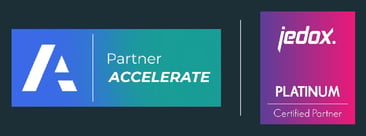Financial planning, amongst other functions, is required to ‘do more with less’. CEOs and Directors want more granular detail to plans and reporting in less time and crucially, with fewer errors. Evidently, this can be a difficult task for anyone who doesn’t have the correct software.
Employing Connected Planning techniques and software that supports this can turn the tide against siloed work, data mismanagement and uninformed decision making. So how can Connected Planning Software solve these issues?
- What can planning software do?
- The crucial features of Connected Planning software.
- The key benefits of planning software.
What Can Planning Software Do?
When we talk of siloed work, we mean those standalone spreadsheets and complex, non-integrated software platforms that rely on many hours of manual data handling to translate information from one to another.
These antiquated systems cause time-consuming workarounds to get past the short-term fire fighting needed to deliver information that management demands. When Finance spend their time doing this, they’re not providing effective support to enable the business to take decisions and act in real-time.
In today's fast-paced business environment planning and forecasting needs to be fast, use accurate, consistent data and be a process that drives cross-functional collaboration. That’s what planning software such as Anaplan promises. Using the right planning software provides the following abilities:
Quickly create connected plans.
By linking financial sales and operational plans, planning software creates a seamless environment. This allows for a collaborative view of big-picture planning and analysis.
Build intuitive models that include financial and operational drivers.
Connected Planning software allows managers to build detailed operational plans, that include business drivers - like the number of transactions processed.
These drivers help management to create plans that reflect exactly what they plan to do and in what volume. They can then make quick and easy adjustments to those plans as circumstances change.
As plans are connected, the impact of changes on other functions are detected and this drives cross-functional collaboration to resolve any issues.
Create and compare scenarios.
Scenarios typically involve large data sets and a good level of complexity, that traditional tools, especially spreadsheet struggle with.
Latest planning software utilise near-unlimited dimensions and hierarchies to model complex driver-based models. This means that they support meaningful scenarios that can be re-calculated in minutes, rather than hours or days.
Planning software as a ‘single source of truth’.
A report by Forrester on the Total Economic Impact of Planning Software used the phrase ‘single source of truth’ to describe the type of platform we’re discussing. To enhance collaboration and company-wide understanding, standardisation is the only way.
Through the use of a single platform for planning, users work from one source of data, consistent language, and connected processes throughout the business.
The Crucial Features of Connected Planning Software
The right planning software provides exceptional business value from these core capabilities:
- Enterprise cloud platform for long-range strategic planning that connects with shorter-term revenue and operational expense forecasting.
- Company-wide alignment and consistency through driver and assumption-based planning.
- Multiple planning scenarios support insightful decision making and corporate agility.
- Demand and supply plans connect to Finance so that the impact of change is reflected immediately in Financial.
- Improved workforce planning that accurately aligns business demand and goals with resources needed.
The interconnectedness of planning software is fuelled by open data integration, which in itself is gained from key data and metadata management. These are processes that can be implemented across the entire lifecycle, from design to delivery.
The Key Benefits of Planning Software
Each feature of planning software mentioned above provides several benefits when it comes to business planning and forecasting techniques. For example, through integrated data forecasting driven by powerful machine learning, the effort of planning and budgeting, as well as the time of each cycle, is greatly reduced.
The right planning software does away with complex coding. It’s incredibly rare that an entire workforce or management-level group will be proficient in coding so by universalising the platform for planning it creates a process everyone can own.
Similarly, by adopting specialist planning software, that is fit for purpose to support the pace of change in today's markets, you can experience these further benefits:
- Planning based on a single, reliable source of data that management trust to support business-critical decisions.
- Connected planning, by its very nature, drives cross-functional collaboration in planning. Management senses changes as they happen and are able to collaborate and adjust based on a consensus view of what is happening - real-time.
- Time to decision is decreased to zero. Real-time information means there's no waiting for ad-hoc data analysis to support decisions.
- Key financial statements, P&L, balance sheet, and cash flow, are connected to operational plans. So changes in operations are reflected in these reports as they happen.
Perfecting your business doesn’t need to take a gargantuan effort. Through the effective consolidation and standardisation of planning across the board, software planning can be an easy way to streamline your processes and perfect your own architectural ecosystem.
In itself, planning software is all about creating a big-picture approach to Connected Planning. If you’re curious about what this looks like in the real world, explore our case studies.
Explore the Profit& Case Studies
Planning software promises a seamless alignment of strategy, planning, budget and forecasting - but what examples are there of this being implemented? In our case studies, you’ll find out how Connected Planning software has solved for many clients.
Click on the link below to discover this seamless alignment in action.





